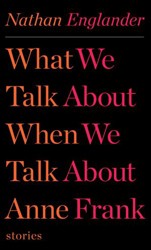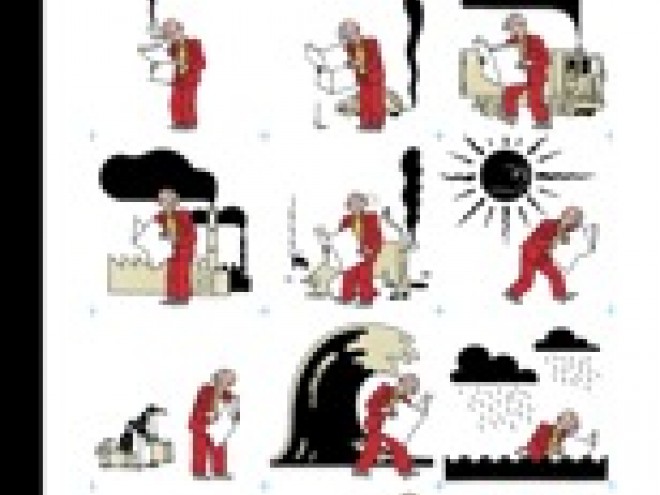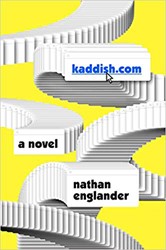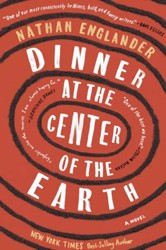Imagine yourself opening a book by a bright, shiny, freshly-minted author of new Jewish stories only to find yourself at a symposium with some of the greatest writers of Jewish fiction of this century. This is For the Relief of Unbearable Urges, by Nathan Englander.
The book is a summing-up of the Jewish fiction of the past fifty years. It is not at all a question of literary influence. Rather, the book should be considered a colloquium, a symposium in which Englander has a series of literary and metaphysical conversations with writers – most, but not all of them Jewish – who have preceded him.
One could go through the Table of Contents of the book and point to the authors Englander engages in conversation and to the works he uses as a jumping off point for his own fiction. A subject that comes up in many of the stories in Jewish literature. The background of the first story of the collection, “The Twenty-seventh Man,” is the execution, on August 12, 1952, of 26 members of the Soviet Jewish Anti-Fascist Committee – most of them Yiddish writers. As in “Royal Garments,” a recent novella by Allen Hoffman, another American living in and writing fiction from Jerusalem, Englander recreates the terror induced by the Soviet system of Justice. Englander writes a midrash on the historical event by adding an unknown writer into the mix. Using an artistic technique called “mise en abyme,” in which a work of art creates a mirroring effect, Englander inserts a story by his fictional character, Pinchas Pelovitz, into his own. Superficially, creativity triumphs over adversity. More importantly, perhaps, the unknown writer, like Englander, triumphantly creates a space for himself in the literary firmament.
Englander’s second story, “The Tumblers,” is as serio-comic tale about the salvation and redemption, during the Holocaust, of a group of pious Jews from the well-known literary shtetl of Chelm. Taking the Chelm stories seriously, Englander takes his seat at a panel with Aharon Appelfeld (Badenheim, 1939), Elie Wiesel (The Trial of God), and Robert Benigni (Life is Beautiful). “The Gilgul of Park Avenue,” about a case of Jewish metem-psychosis, is a round-table discussion with the Philip Roth of “Eli, the Fanatic,” the Bernard Malamud of “The Silver Crown,” the Cynthia Ozick of “Usurpation,” and the Woody Allen of “The Shallowest Man.” But make no mistake about it. For all his concertizing with previous fiction, Englander’s compositions are not at all derivative. Englander’s voice and tempo are truly distinctive and immediately recognizable as his own.
Although he himself is a “lapsed Jew” – a Jew who grew up in the bosom of Jewish religious life but who subsequently abandoned its practice – Englander is nonetheless a culturally confident one. His stories are filled with “insider lingo” and other Jewish cultural markers (more than forty words, phrases and allusions to traditional Jewish practice). He does not consider it necessary to define expressions like sheitel macher and trayf up and bedekken. Not only does he know the difference between shul and shtibl, and a meikil and a mahmir, he also asks the reader to make an effort to find the subtlety himself.
It is not only a matter of vocabulary, however. The geographical settings of Englander’s stories and their historical moment are no less revealing. In this book, we travel backwards in time from Stalinist pogroms in the Soviet Union to the devastation of an Eastern European shtetl during the Holocaust. From there we migrate to America, making stops in an America-Jewish suburb, in a fictional version of Borough Park, Brooklyn (called Royal Hills by the author), and in an upscale section of Manhattan. We then move to Israel, to the religious section of Jerusalem, with a little foray into naughty Tel-Aviv. Our last stop, like Englander’s, is a locale in secular Jerusalem. There, during and after a terrorist bombing, American Nathan has become Israeli Natan.
The imagination, these stories tell us, may not bring happiness; it can, however, bring redemption. The ability to put on a play, to use their imagination, is what will set the Mahmir Hasidim of the story “Tumblers” free. Curiously, even though it is the exercise of his imagination that has set the author of these stories free of his Judaism, it has also kept him firmly attached to his Jewish identity. What Nathan Englander teaches us in this extraordinarily complex and energizing volume is that although you can imagine yourself free and even imagine yourself “other,” you cannot succesfully imagine yourself in a vacuum, purged of your past and your people.
When the Soviet prison guard in “The twenty-seventh Man” opens the peephole in the door of the cell imprisoning the Jewish writers, he finds that “a symposium has broken loose.” even at the most extreme moments, one can imagine a group of Jews exercising their collective freedom and claiming their identity. That’s what has happened in this collection as well. It remains to be seen what our own Pinchas Pelovitz, the young American Jewish writer named Nathan Englander residing in Jerusalem, will create in the aftermath of the present symposium.





